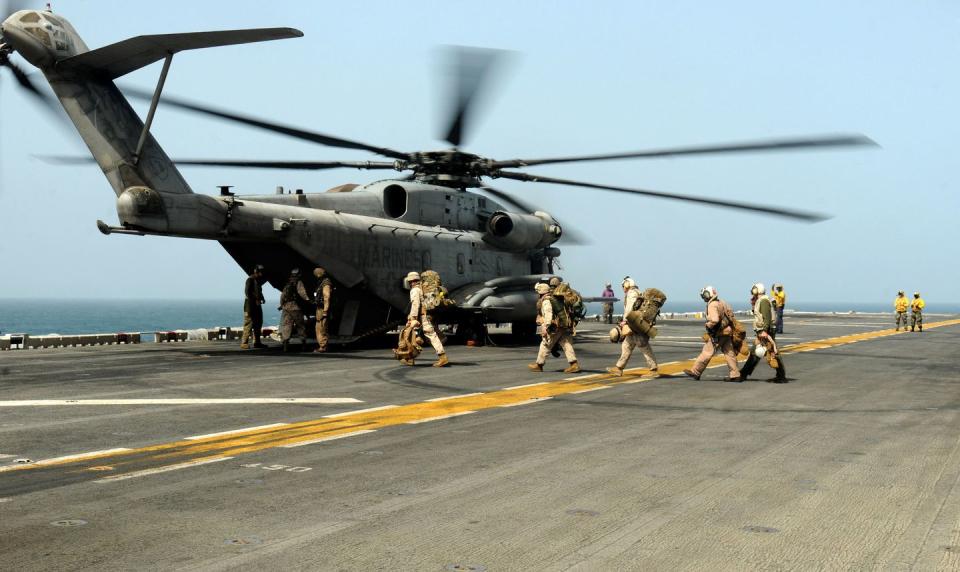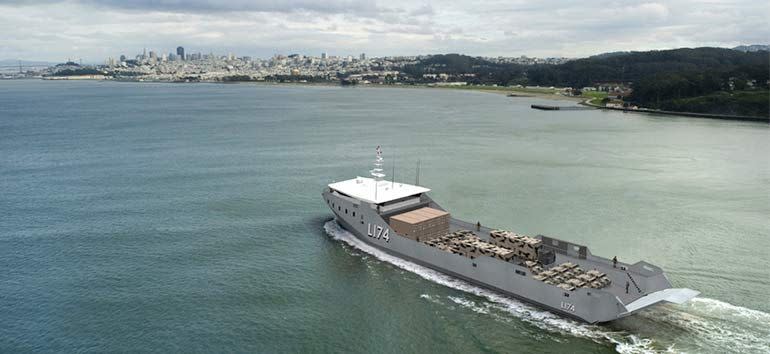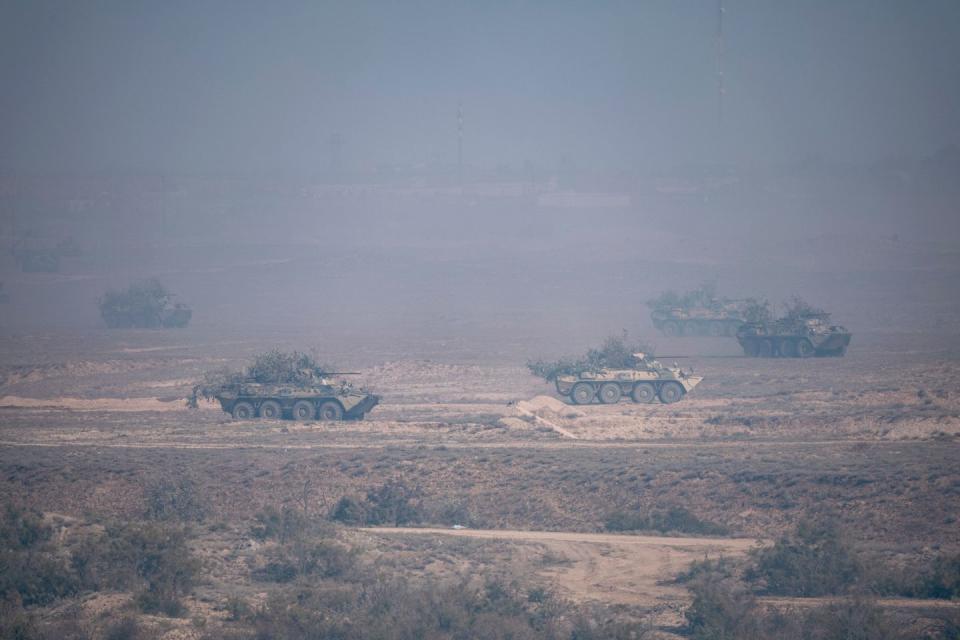The Marine Corps Is About to Reinvent Itself—Drastically
The U.S. Marine Corps is on the verge of its most comprehensive makeover in 100 years.
The makeover will see the Marines organize into smaller units, supported by uncrewed ships and aircraft, precision strike weapons, and small amphibious landing ships.
The goal to build a force capable of seizing China’s bases in the South China Sea.
The U.S. Marine Corps is on the verge of its first major reorganization in a century, one that will position America’s premier amphibious force to land on China’s doorstep.
➡ You love badass military tech. So do we. Let’s nerd out together.
The Marines will organize into smaller units capable of operating across vast distances, seizing China’s network of artificial island bases in the South China Sea. The revamp will see the Marines trade in their tanks, artillery, and even some F-35s in return for long-range missiles, unmanned boats, and anti-ship weapons.

Breaking Defense has exclusively revealed the Marines’ plan to reorient from essentially a second land army to concentrate on amphibious operations in the Asia-Pacific. The Marines have fought in Iraq and Afghanistan since 9/11 as a land force, divorced from their traditional amphibious mission. (Afghanistan, for example, is a landlocked country.) The Marines will organize three littoral regiments, each capable of operating along coastlines or across island archipelagos.

The Marines plan to conduct island-hopping campaigns with a new Light Amphibious Warship (LAW), a long-range amphibious ship capable of carrying a company or more of Marines thousands of miles. The LAWs won’t have much room for heavy equipment, and most of the gear, like 155-millimeter howitzers and main battle tanks, won’t be all that useful for taking over small islands, anyway. Toward this end, the Marines will lighten up their force structure. As Seapower magazine reported in 2020:
Under the new plan, the Marine Corps will totally divest itself of law enforcement and tank battalions, decrease infantry battalions from 24 to 21, slash artillery cannon batteries from 21 to just five, reduce amphibious vehicle companies from six to four, and cut the number of helicopter and tilt-rotor squadrons.
The Marines will also reduce their purchase of F-35C Joint Strike Fighters, the carrier-capable variant of the F-35 fighter jet.
Reductions in artillery, tanks, and other weapons will allow the Marines to invest in other weapons, particularly 14 new Navy-Marine Expeditionary Ship Interdiction System (NMESIS). These batteries, armed with Norwegian-developed Naval Strike Missiles, will allow the Marines to fend off Chinese warships, making a 115-mile no-go zone around Marine positions.
As the Marines advance through a chain of islands, their anti-air and anti-ship missiles will make it increasingly difficult for Chinese ships and aircraft to operate around them, eventually squeezing them out entirely.
Here’s a video of the Naval Strike Missile test fired from the littoral combat ship USS Gabrielle Giffords:
The Marines will also procure over 100 Long Range Unmanned Surface Vessels (LRSUV), among other systems. Equipped with sensors and weapons, LRSUVs could circle islands held by China, identifying troop concentrations and then bombarding them with precision weapons. This would be a smaller-scale, more focused version of the large naval bombardments of World War II, when hundreds of ships would hurtle thousands of tons of unguided artillery shells against targets on islands like Iwo Jima and Okinawa.
Overall, the aim of the Marines’ new littoral concept is to complement a war at sea by taking over enemy positions on land. The Marines would systematically isolate, bombard, and overrun China’s network of artificial islands in the South China Sea, and then set up air defense and anti-ship batteries to make the space around them hostile to Chinese forces. This would restrict the Chinese Navy’s and Air Force’s room to maneuver, pushing them out into the open water—where the U.S. Navy would take them on.

The Marines’ new operating concept might be too light to operate against heavily mechanized enemies, however, like the North Korean People’s Army or Russian Ground Forces. While the Marines will have no shortage of tank-killing firepower, they’ll lack tanks capable of slugging it out with other tanks, especially when advancing into territory against tank-heavy forces. If that happens, the Marines say they’ll request tank support from Army units. But the Army may have other plans.
This decade looks to be a period of flat military spending, thanks to COVID-19, a growing national debt, and other economic priorities. Most, if not all, of the U.S.’s armed services will have to pick and choose the capabilities in which they’ll invest. The Marines are just the first service to make bold trade-offs.
The Marine Corps of 2030 might not be an effective fighting force against everyone, but neither is the Corps of today. The difference? If the Marines get their way, they’ll be laser-focused against their most likely “big war” scenario.
➡ Want more elite military content? Join Pop Mech Pro now. See you on the other side.
You Might Also Like

